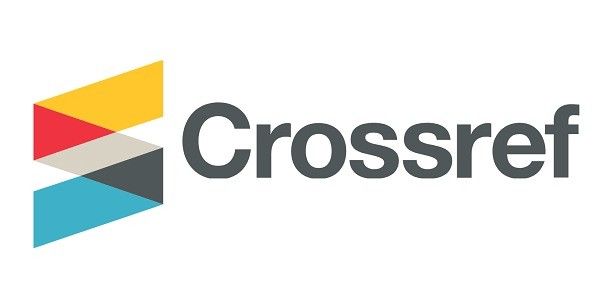Abstract
Traumatic Brain Injuries (TBIs) are often connected to the development of Chronic Traumatic Encephalopathy (CTE), a degenerative brain disease commonly found in athletes, military veterans, and others that have a history of repetitive brain trauma. This formative exploratory study looked at person-centred design techniques for a person with CTE. The person-centred design method used for this study was based on a two-tiered reductionist approach; the first tier was to identify common symptoms and concerns associated with CTE from the literature. This information provided specific symptoms that were addressed through brainstorming ideations. Each singular ideation accommodated the singular, or small cluster of symptoms, that affected a person with CTE in a residential environment. This method of understanding a health condition through its symptoms, and then designing for those symptoms can extend the practice of interior design by providing probable solutions to specific health symptoms, thereby including designers into the healthcare team. Commonly identified behavioural and physical symptoms of CTE served as the factors of analysis and thus a variable of design. The health condition symptoms became the variables of design, and each symptom was assessed through additional data obtained from the literature for environmental causality, mitigation, or accommodation. Once the outcomes were determined, each design implication was assessed for its relationship to specific design actions.
Publication Date
1-24-2020
References
ADA National Network. (2019). ADA: Findings, purpose, and history. Retrieved from https://www.adaanniversary.org/findings_purpose
American Academy of Orthopedic Surgeons. (2014, March 14). Significant head, neck injury risk associated with extreme sports. ScienceDaily. Retrieved from http://www.sciencedaily.com/releases/2014/03/140314093733.htm
American Speech, Language, and Hearing Association (n.d.). Traumatic Brain Injuries in Adults. Retrieved from http://www.asha.org/PRPSpecificTopic.aspx?folderid=8589935337§ion=Incidence_and_Prevalence
Blennow, K., Brody, D. L., Kochanek, P. M., Levin, H., McKee, A., Ribbers, G. M., Yaffe, K., & Zetterberg, H. (2016). Traumatic brain injuries. Nature Reviews Disease Primers 2, 16084. https://doi.org/10.1038/nrdp.2016.84
Centre for Excellence in Universal Design (2014). The 7 Principles. Retrieved from http://universaldesign.ie/What-is-Universal-Design/The-7-Principles/#p1
Deng, H., Yue, J. K., Winkler, E. A., Dhall, S. S., Manley, G. T., & Tarapore, P. E. (2019). Adult firearm-related traumatic brain injury in United States trauma centers. Journal of Neurotrauma, 36(2), 322-337. https://doi.org/10.1089/neu.2017.5591
Dewan, M. C., Rattani, A., Gupta, S., Baticulon, R. E., Hung, Y. C., Punchak, M., Agrawal, A., Adeleye, A. O., Shrime, M. G., Rubiano, A. M., Rosenfeld, J. V., & Park, K. B. (2018). Estimating the global incidence of traumatic brain injury. Journal of Neurosurgery, 130(4), 1039–1408.
Deziel, C. (2018, April 23). Which colors reflect more light? Sciencing. Retrieved from: https://sciencing.com/colors-reflect-light-8398645.html.
Filer, W., & Harris, M. (2015). Falls and traumatic brain injury among older adults. North Carolina Medical Journal, 76(2), 111–114. https://doi.org/10.18043/ncm.76.2.111
Friedman, D.I., & De Ver Dye, T. (2009). Migraine and the environment. Headache: Journal of Head and Face Pain, 49(6), 941–952. https://doi.org/10.1111/j.1526-4610.2009.01443.x
Harvey, L. (2012). Social research glossary. Retrieved from https://www.qualityresearchinternational.com/socialresearch/positivism.htm.
Jernigan, R., Johnston, C., McAlister, B., & Lin, H. (2015). Design for active aging. Gensler Research Institute: Research & Insight. Retrieved from https://www.gensler.com/research-insight/gensler-research-institute/design-for-active-aging
Kaplan, R., & Kaplan, S. (1989). The experience of nature: A psychological perspective. Cambridge, England: Cambridge University Press.
Knox, N. (2015). What is WELL? Retrieved from https://www.usgbc.org/articles/what-well
Kopec, D. (2018). Environmental psychology for design (3rd ed.). New York: Bloomsbury Press.
Kopec, D., & Harte, J. D. (2019). Design as the missing variable in trauma-informed schools. In R. Rosen (Ed.), Supporting and educating traumatized students: A guide for school-based professionals(2nd ed.). Oxford: Oxford University Press.
Leifer, L., & Meinel, C. M. (2016). Design thinking becomes foundational. In H. Plattner, C. Meinel, & L. Leifer (Eds.), Design thinking research: Making design thinking foundational (pp. 1–4). New York: Springer.
Li, D., and Sullivan, W.C. (2016). Impact of views to school landscapes on recovery from stress and mental fatigue. Landscape and Urban Panning, 148, 149–158. https://doi.org/10.1016/j.landurbplan.2015.12.015
Mace, R. (2019). What is "Universal Design?" Retrieved from https://universaldesign.org/definition
McKee, A. C., Stein, T. D., Kiernan, P. T., & Alvarez, V. E. (2015). The neuropathology of chronic traumatic encephalopathy. Brain Pathology, 25(3), 350–364. https://doi.org/10.1016/B978-0-444-63954-7.00028-8
National Institutes of Health: National Institute of Aging (2017, May 1). Aging in place: Growing older at home. Retrieved from: https://www.nia.nih.gov/health/aging-place-growing-older-home
Ohly, H., White, M. P., Wheeler, B. W., Bethel, A., Ukoumunne, O. C., Nikolaou, V., & Garside, R. (2016). Attention Restoration Theory: A systematic review of the attention restoration potential of exposure to natural environments. Journal of Toxicology and Environmental Health, Part B, 19(7), 305–343. https://doi.org/10.1080/10937404.2016.1196155
Patel, D., Sharma, K., Chauhan, C. S., Jadon, G., & Diwaker, A. (2013). An Overview - Chronic traumatic encephalopathy (CTE). International Journal of Advanced Research in Pharmaceuticals and Bio Sciences, 3(3), 73–83.
Reed-Guy, L. (2018, April 9). Head injury. Retrieved from: https://www.healthline.com/health/head-injury
Reiner, M., Rozengurt, R., & Barnea, A. (2014). Better than sleep: Theta neurofeedback training accelerates memory consolidation. Biological Psychology, 95, 45–53. https://10.1016/j.biopsycho.2013.10.010
Risdall, J. E., & Menon, D. K. (2011). Traumatic brain injury. Philosophical Transactions of the Royal Society B: Biological Sciences, 366(1562), 241–250. https://doi.org/10.1098/rstb.2010.0230
Sánchez-Tena, M. A., Alvarez-Peregrina C., Valbuena-Iglesias M. C., & Palomera, P. R. (2018). Optical illusions and spatial disorientation in aviation pilots. Journal of Medical Systems, 42(5), 79. 10.1007/s10916-018-0935-4
Smith, D. H., Johnson, V. E., Trojanowski, J. Q., & Stewart, W. (2019). Chronic traumatic encephalopathy: Confusion and controversies. Nature Reviews Neurology, 15, 179–183. https://doi.org/10.1038/s41582-018-0114-8
Taylor, A. F., & Kuo, F. E. M. (2011). Could exposure to everyday green spaces help treat ADHD? Evidence from children’s play settings. Applied Psychology: Health Well-Being, 3(3), 281–303. https://doi.org/10.1111/j.1758-0854.2011.01052.x
Turner, R. C., Lucke-Wold, B. P., Robson, M. J., Lee, J. M., & Bailes, J. E. (2016). Alzheimer’s disease and chronic traumatic encephalopathy: distinct but possibly overlapping disease entities. Brain Injury, 30(11), 1279–1292. https://doi.org/10.1080/02699052.2016.1193631
Vynorius, K. C., Paquin, A. M., & Seichepine, D. R. (2016). Lifetime multiple mild traumatic brain injuries are associated with cognitive and mood symptoms in young healthy college students. Frontiers in Neurology, 7(3), 188. https:// 10.3389/fneur.2016.00188
Wiglesworth, S., & Farnworth, L. (2016). An exploration of the use of a sensory room in a forensic mental health setting: Staff and patient perspectives. Occupational Therapy and Criminal Justice, 23(3), 255–264. https://doi.org/10.1002/oti.1428
Williams, J. D., & Gruzelier, J. H. (2001). Differentiation of hypnosis and relaxation by analysis of narrow band theta and alpha frequencies. International Journal of Clinical and Experimental Hypnosis, 49(3), 185–206. https://doi.org/10.1080/00207140108410070
Zetterberg, H., Winblad, B., Bernick. C., Yaffe, K., Majdan, M., Johansson, G., Newcombe, V., Nyberg, L., Sharp, D., Tenovuo, O., & Blennow, K. (2019). Head trauma in sports: Clinical characteristics, epidemiology and biomarkers. Journal of Internal Medicine, 285(6), 624–634. https://doi.org/10.1111/joim.12863
Submitted Date
2019-09-30
Accepted Date
2019-12-05
First Page
97
Last Page
116
Recommended Citation
Kopec, D., & Marsh, K. (2020). Chronic Traumatic Encephalopathy and the Built Environment. Interiority, 3 (1), 97-116. https://doi.org/10.7454/in.v3i1.71
Creative Commons License

This work is licensed under a Creative Commons Attribution-NonCommercial 4.0 International License
Author(s) retain the copyright of articles published in this journal, with first publication rights granted to Interiority.







